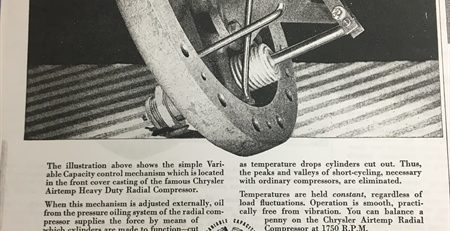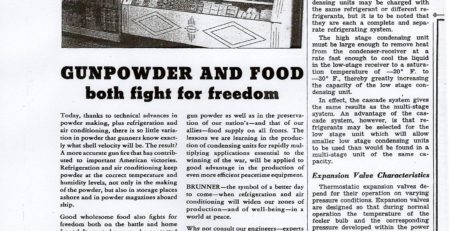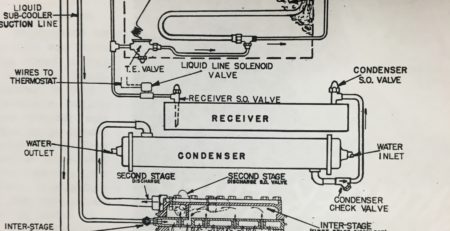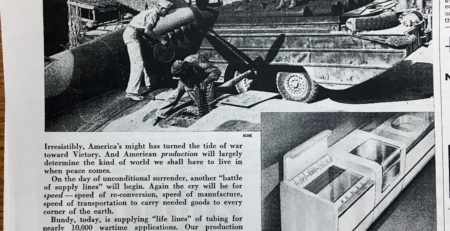The St. Louis Motor Valve Company
In this accompanying ad from the April 10, 1944 issue of the Refrigeration News, the Sporlan Company is touting their new thermostatic valves with selective charges for post war projects.
Starting as the St. Louis Motor Valve Company in 1925, Herman Spoehrer and Harold Lange were true pioneers of the refrigeration industry. By 1944, when Refrigeration Research was just beginning, Spoehrer and Lange were both veterans having grown up with the industry after graduating from Washington University with degrees in Electrical Engineering.
Lange began as a sales engineer for General Electric while Spoehrer formed the S & S electrical contracting business with Sam Sachs after graduating in 1925. Through an engineer at one of his customers, the York Ice Machinery Corporation, Lange became interested in developing an electric motor valve to automatically control the flow of liquid ammonia refrigerant.
When G.E. rejected his idea for the motorized valve due to what they thought was its small limited marketing potential, Lange pressed on by devoting most of his spare time toward developing a prototype as he anticipated growth in the young electric refrigeration industry. With prototype in hand, he approached his friends, Herman Spoehrer and Sam Sachs who operated a machine shop in connection with their electrical contracting business in the hope they could produce the valves. Together the three of them formed the St. Louis Motor Valve Company. While remaining in their current “day” jobs they devoted their spare time to the fledgling company. By 1926 Sam Sachs opted out to focus on his electrical contracting business and Spoehrer went full time into the valve company with Lange’s help while he remained at G.E.
At that time another local valve company, Alco Valve Company, urged Spoehrer and Lange to make a smaller less expensive valve based on electro magnet principles and supply them to Alco. These new solenoid valves became the mainstay of their business so much that in 1929 Alco bought the St. Louis Motor Valve Company and made Lange their vice president and chief engineer and Spoehrer their secretary and treasurer.
The relationship did not last however as both Lange and Spoehrer left to form their own company in 1933. The new valve company, The Spoehrer-Lange Company, later shortened to Sporlan, focused on building thermostatic expansion valves. Spoehrer-Lange pioneered the thermostatic expansion valves with selective charges based on the specific application.
Both Spoehrer and his father played the zither a German instrument similar to a guitar. When the company out grew its small facility and looked to expand, Spoehrer remembered the small German immigrant community in Washington, Missouri. He was impressed by their skill as machinists and craftsmen when he went there to buy a zither. He was confident that they could find there a high quality work force and so they moved the business to Washington. However, despite the excellent quality of their work, many of their valves were returned as defective.
Close examination of the returns revealed no defects in design or workmanship. Instead they found the valves hampered by debris and moisture which came from inside the refrigeration system. Lange and Spoehrer decided they had better get into the business of making filters and driers if they wanted to stay in the business of making valves. Thus, the Sporlan drier was born.
Sporlan never fully abandoned their original idea of the electric motor valve and with the demand for higher system efficiency came the demand for more precise and variable flow control. So, Sporlan responded by returning to its roots with the introduction of electric motor expansion valves. The precise stepper motor valves optimized the expansion process over greater load variation to provide improved overall system efficiency.
Refrigeration Research continues to celebrate its 75th anniversary by recognizing some of the past achievements made by companies in the industry when Refrigeration Research began in 1944.






